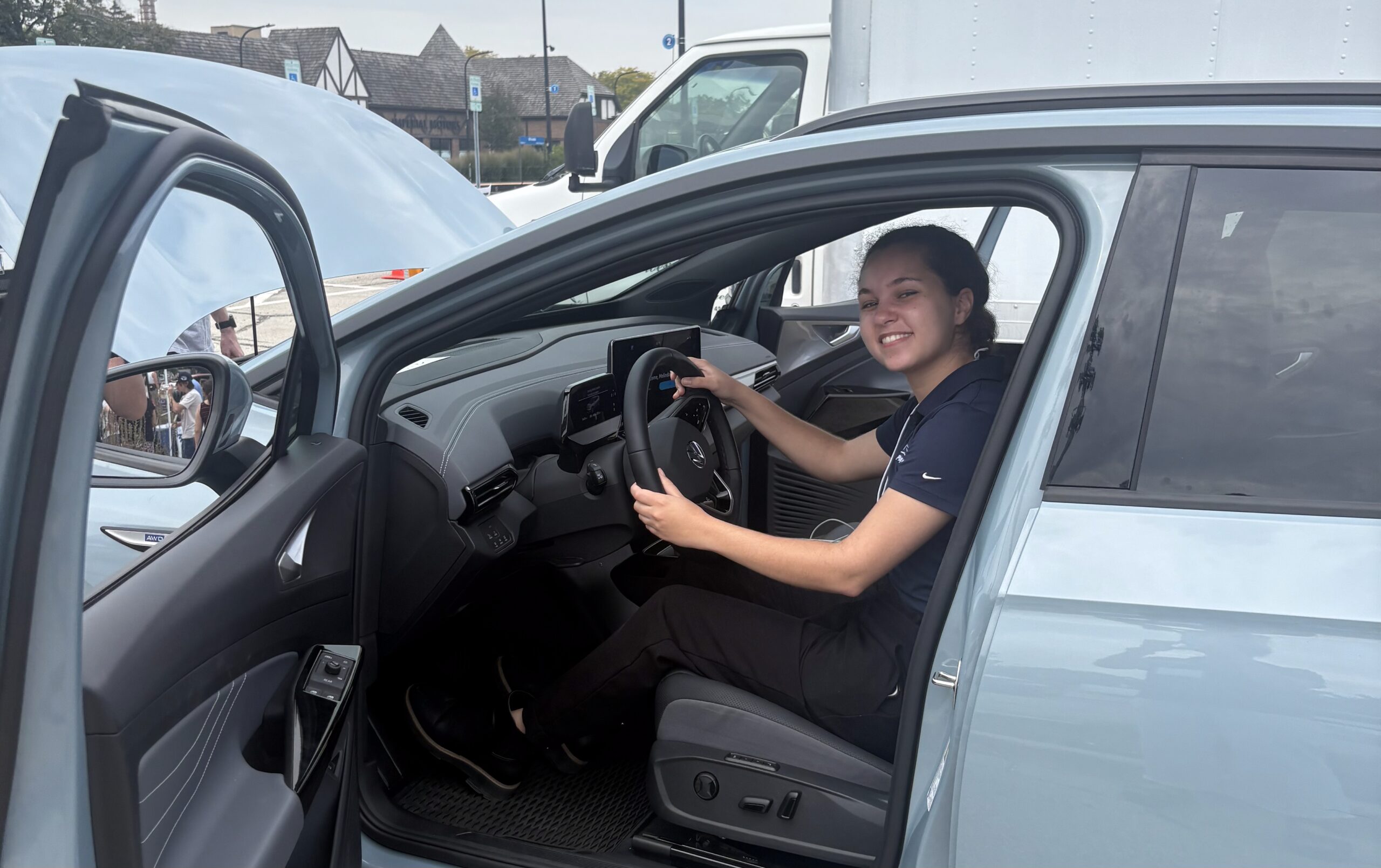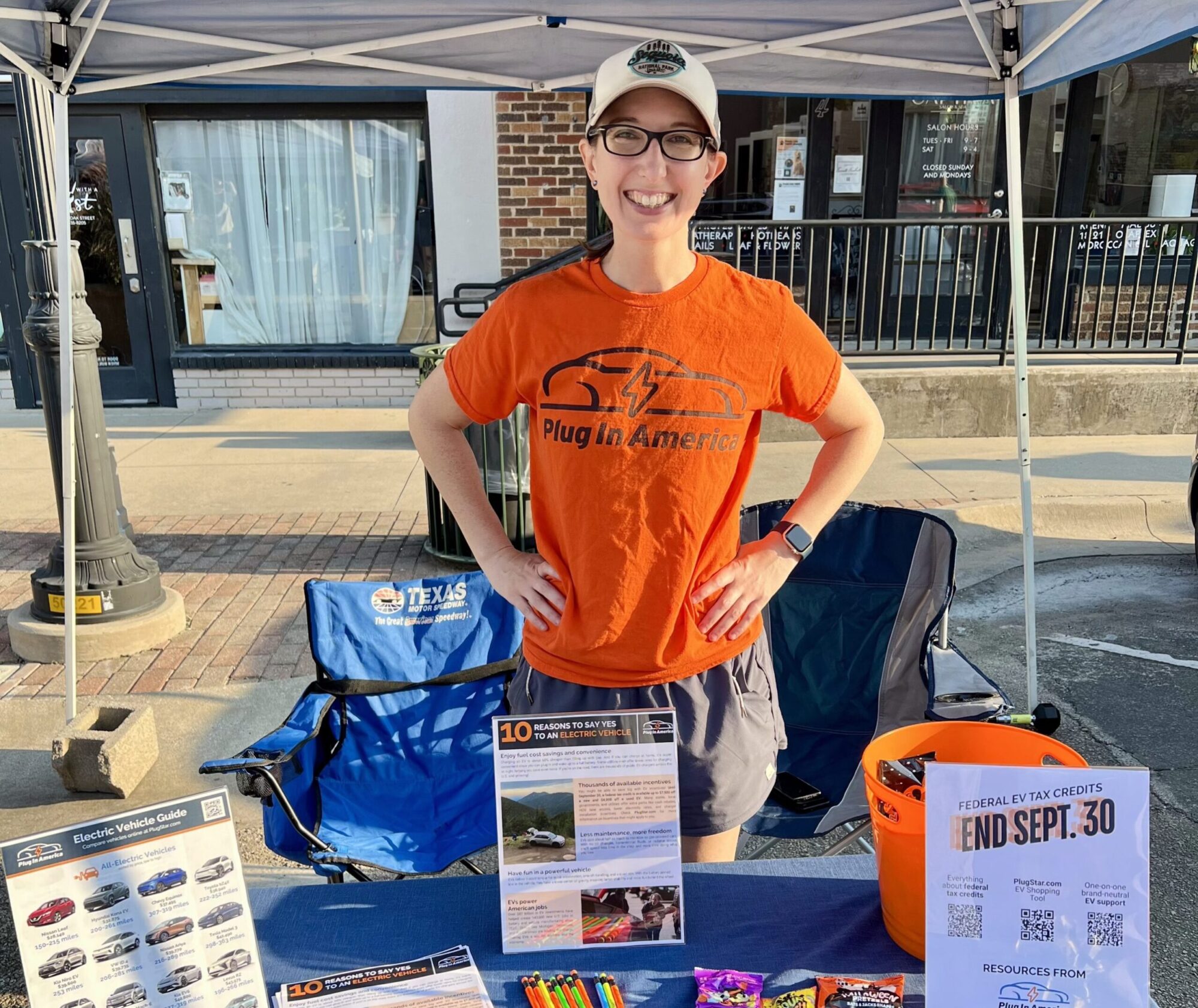What happens when consumers experience all of the available plug-in vehicles together, all at once, in one place? This is one of the concepts behind National Drive Electric Week (formerly National Plug In Day). As simple as it sounds, evidence compiled by Plug In America president Richard Kelly suggests that these volunteer-driven events have a big impact, boosting plug-in vehicle sales by up to 24 percent in an otherwise flat month for car sales generally.

Photo Credit: State of Vermont, 2013 Event
Category marketing is old hat. When marketing a category, a line of related products are introduced to customers to help them locate the best choice among them. Think of the toothpaste aisle in the grocery store. Find the aisle? Find the toothpaste. Seeing the entire category helps me make my toothpaste choice.
Today’s plug ins play an important role for every auto manufacturer related to the category story stories about their line of cars – each is telling about their overarching and sub brands. By placing plugs ins within their product line alongside their other vehicle offerings, they set a series of important markers for consumers – they demonstrate innovation, technological excellence, and commitment to sustainability. Customers may or may not choose the plug in, but having that car as part of the broader brand story helps deepen the customer relationship. And for good reason the plug ins are among their very best cars.
A number of automakers have reported on the success of this strategy in garnering conquest sales; plug ins bring new converts into showrooms. We also understand that for every plug in sold, each vehicle is probably selling many times more traditional cars simply because they are so effective as part of a category outreach strategy. The strong evangelism of plug in drivers helps on this count – what better introduction to a showroom than via a satisfied (albeit plug in) customer?
But plug ins are not simply a category related to a particular manufacturer’s overall brand strategy. Plug ins are a category by themselves. Yet plug-ins as their own category is a concept that is only just starting to exist. Typically, vehicle data is compiled at the “light duty vehicle” level, and then by body style (SUV, sedan, etc.). Some organizations have taken the step to break out energy source (The US DOE, NADA). But much of the high-level information used by auto executives for planning may not break out plug-ins; and when something is not documented for corporate planning, it doesn’t exist. Finally, few executives likely understand that customers may be walking into showrooms looking for cars powered by electricity; they may lump the PEV segment into the “high-mileage” car buyer segment and may incorrectly conclude that these buyers will be attracted to a traditional hybrid.

Plug ins are often not broken out from larger segments
The idea that plug ins are best experienced in comparison to each other is poorly understood in our field, and for good reason. Individual companies are reluctant to show their plugs in alongside their competitors, and we are unaware of any national campaigns aimed at systematically introducing the entire range of plug in electric vehicles to consumers except for two – National Drive Electric Week and Plug In @ Work.
We’ll have data on Plug In @ Work later this year (thanks to our partnership in the Bay Area’s Experience Electric Campaign), but at least some on National Drive Electric Week’s impact on sales paints a compelling picture. Richard Kelly has plotted the monthly sales pace for plug ins each year since they were introduced. The story contains some familiar features for the auto industry – sales peak in the fall and dip precipitously after the beginning of the year.
The weekend of NDEW set a new record for rebate applications. Most buyers submit the rebate app within a day or two of purchase. Dealers reported a rush of sales leads after NPID events.
Yet when the line from National Drive Electric Week each year is drawn – beginning with 29 cities in 2011 and heading north of 120 cities this year – the potential category impact of the event begins to become clear. After the seasonal January dip, NDEW essentially serves as a new floor for plug in sales for the remainder of the year. At least until the next NDEW, at which point a new floor is drawn.
Reports from the field corroborate the impact. The organization managing plug-in vehicle rebates for the state of California reported that September 2013, just after that year’s Drive Electric Week, was a record month for PEV sales, as measured by the Center for Sustainable Energy’s (CSE) rebate applications. “The weekend of [National Drive Electric Week] set a new record for rebate applications,” said Colin Santulli, CSE program manager, “Most buyers submit the rebate app within a day or two of purchase. Dealers reported a rush of sales leads after event.”
The impact is even more interesting when compared to the monthly October sales data for all vehicles. While October PEV sales have jumped 12%, 23%, and 19% each year that we’ve held NDEW, total October auto sales have actually dropped twice during the same period. PEV sales are decoupled from general auto sales trends during the period and are strongly positive versus either unchanged or negative for light duty vehicle sales as a whole.
Plug ins are a category. And when the category is introduced as a whole, it impacts consumers and permanently affects sales. So what do you think – is National Drive Electric Week affecting the national sales cycle for plug in electric vehicles?
Figures


Chart Sources
Light vehicle sales data: Bureau of Economic Analysis, https://www.bea.gov/national/xls/gap_hist.xls, Table 6, Column C
PEV sales data: Electric Drive Transportation Association Sales Dashboard, August 4th, http://electricdrive.org/index.php?ht=d/sp/i/20952/pid/20952, Combined PHEV and BEV columns

